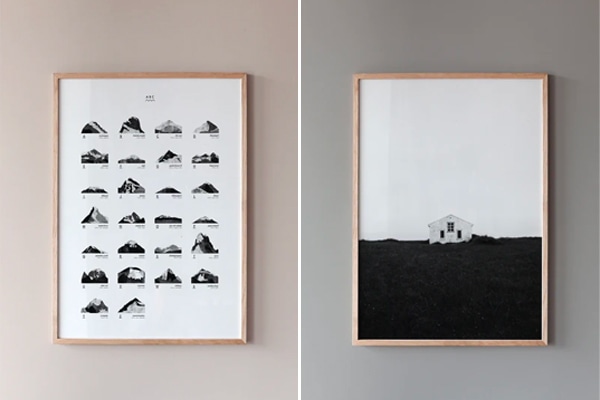Frederik Werner is a designer and partner at Norm Architects. He lives with his family in a beautiful brick villa from 1917, which he transformed into a minimal home with clean lines, Japandi furniture, a mix of natural materials, and a clear hint of Japanese aesthetics mixed in with Scandinavian interior design elements: Japandi interior design.

This Japandi-style interior results in a calm atmosphere for his family that highlights the honest material qualities of the oak wood, soft fabrics, and rice paper lampshades used in the space. The natural light in this home is enhanced and softened by the limewash paint which has been used on all the walls in the entire house.

Japandi interior design is based on a combination of Japanese and Scandinavian design principles and has been gaining quite some popularity over the last few years.
Natural materials in the kitchen and dining area
Natural elements in the Profile kitchen from Reform
The kitchen has a very elegant, minimal aesthetic where the oak wood fronts and countertop are allowed to shine in their simplicity. The kitchen fronts are Profile designed by Norm Architects for Reform, which have a Scandinavian design presence that mixes both light wood and a thin metal strip at the handle for a simple effect with a functional presence. The matching butcher block countertops in the same oak material finish the kitchen design off perfectly.

A dining area where Japanese and Scandinavian styles meet
The dining area follows the Japandi style elegance of the kitchen with a dining table and dining chairs, both from Karimuko case study, in oak on a beautiful wood floor. The simple bench which has the same Japanese style elegance as the dining table provides a setting for displaying books and art and both above the bench as well as above the dining table you can find a rice-paper lamp, so typical in Japanese interiors.
In both the kitchen and the dining area, it’s the mix of natural materials, warm neutral tones, and natural light that accentuate the Japandi style element in the interior.



A modest Japandi-style living room with rich dark brown wood
While the kitchen and dining area make use of a mixture of wood in a lighter color palette, in the living room, you can find mostly dark wood in the furniture pieces, combined with a neutral palette of marble, linen, and the same light wood flooring as in the dining room.
The clean lines are enhanced by the dark color palette in this living space, while the mix of Japanese and Scandinavian design pieces makes the space look high-end and sophisticated, as Japanadi furniture tends to do.




Japandi interior design in the bedroom and bathroom
Both the attic bedroom and the bathroom are located underneath the roof, which the exposed wood beams in the bedroom highlighting the architectural integrity of the house. The bedroom has been kept very simple, yet the addition of natural materials and light wood matches the natural elements in the architecture, which is a strong design element in itself.


How to incorporate Japandi interior design principles in your own home
Both Scandinavian and Japanese interior design practices are based upon the same minimalist principles where natural elements, simple lines, natural materials, and neutral colors are mixed into a balanced setting.
Scandinavian interior design styles are based upon the celebration of bright spaces and natural light, as it’s a culture with very little of it, especially during winter months. Light palettes tend to reflect the light, which is why they are so common in Scandinavian design.
When creating a Japandi interior design, focus on highlighting the natural light that flows into a room and work with natural colors and materials mixed with elegant furniture pieces with clean and simple lines for a minimalistic effect that is rich in texture.



